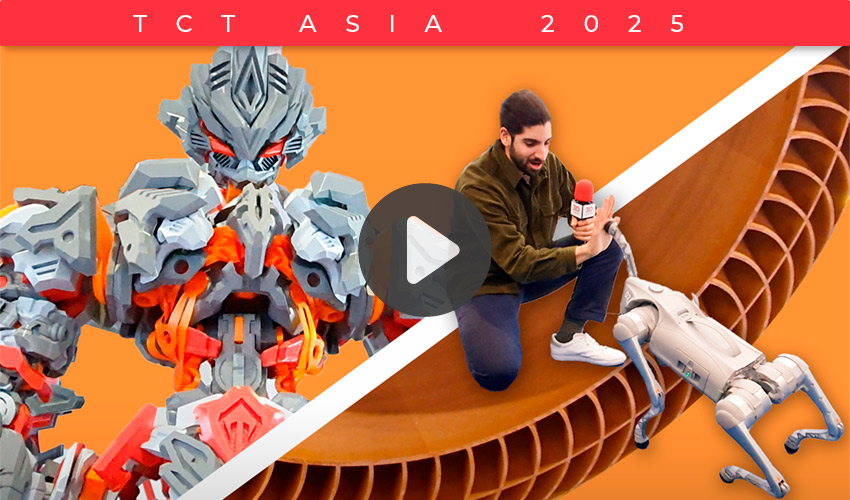The Most Surprising 3D Printing Applications at TCT Asia 2025

TCT Asia 2025 has wrapped up, but there’s still plenty to talk about! As one of the biggest additive manufacturing events in Asia, this year’s edition showcased some of the industry’s most innovative 3D printing applications. Our team at 3Dnatives was on the ground, exploring the latest breakthroughs in metal, robotics and artistic engineering. In this video, Filippos Voulpiotis, Managing Director, takes a look at five standout uses of the technologies that impressed us at the show.
We start with BLT’s 3D printed hypersonic aircraft, this project was printed in 384 hours using aluminum alloy. With an integrated engine configuration and lattice structural framework, it is a prime example of how additive manufacturing is transforming aerospace design.
Next, at Anisoprint’s booth, we saw the AnisoDog, a robotic dog featuring 3D printed composite parts. Its legs were printed using PETG with Continuous Carbon Fiber, mimicking a bone-like structure inside for strength and stability. Each leg took around 12 hours to print, highlighting the potential of composite AM in robotics.
Then, at CNPC Powder, a Canadian company with facilities in China, we discovered a metal 3D printed motorbike made with Scalmalloy, a material originally developed by APWORKS, from the Airbus Group. This high-strength, corrosion-resistant aluminum alloy is proving to be a game-changer for automotive and aerospace applications.
Meanwhile, one of the most visually striking 3D printing applications at TCT Asia was the 3D printed Qinling Dragon God, by the Chinese studio Starforge, a structure made from over 1,000 PETG and TPU components using FDM technology. Beyond its technical complexity, this dragon carries strong cultural significance, merging traditional artistry with modern manufacturing.
Finally, we checked out Eplus3D’s impeller, made from hard copper alloy and which was printed in 186 hours. Copper remains a challenging yet highly valuable material in AM due to its conductivity, making this an important step forward for high-performance industrial applications.
These applications are just a glimpse of what we saw at TCT Asia 2025, proving that additive manufacturing in China continues to evolve at an incredible pace. Be sure to check out the full video for a closer look at these innovations!
What do you think about the 3D Printing Applications at TCT Asia 2025? Let us know in a comment below or on our LinkedIn, Facebook, and Twitter pages! Don’t forget to sign up for our free weekly Newsletter here, the latest 3D printing news straight to your inbox! You can also find all our videos on our YouTube channel.







